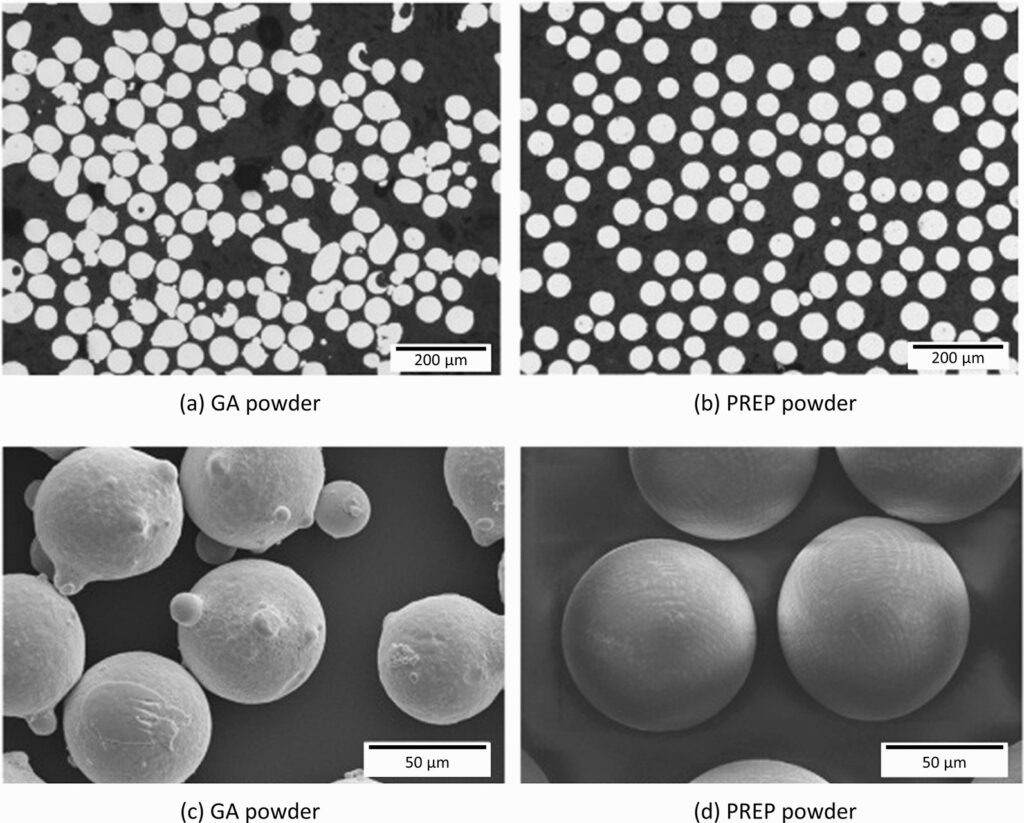
炭化タングステン/コバルト/クロムパウダー:ヘビーデューティ性能のための完璧なブレンド
低いMOQ
さまざまなニーズに対応するため、最低注文数量を少なくしています。
OEM & ODM
顧客独自のニーズに応えるため、カスタマイズされた製品とデザインサービスを提供する。
十分な在庫
迅速な注文処理と、信頼できる効率的なサービスの提供。
顧客満足度
顧客満足を核とした高品質の製品を提供する。
この記事を共有する
目次
炭化タングステン/コバルト/クロム粉末の概要
のために設計された素材といえば 極めて高い耐摩耗性、優れた硬度そして 抜群の耐久性, 炭化タングステン/コバルト/クロム粉(WC-Co-Cr) を変えるソリューションとして際立っています。コバルトとクロムが結合した炭化タングステン粒子のブレンドであるこの複合材料は、靭性と耐腐食性が重要な高応力用途向けに特別に設計されている。
ダイヤモンドが最も硬い素材としてよく宣伝されているのをご存知だろうか。工業用途では、炭化タングステンがそれに匹敵します。靭性を高めるコバルトと耐食性を高めるクロムを加えれば、過酷な環境にも耐えられる素材ができあがります。 航空宇宙, 採掘, 石油・ガスあるいは 溶射皮膜.まるでスイスアーミーナイフのようなパウダーだ。
この包括的なガイドでは、以下の項目について深く掘り下げます。 タイプ, 構成, プロパティ, アプリケーションそして 価格設定 炭化タングステン/コバルト/クロム粉末の。最後には、このパウダーが最高の材料性能を要求する産業において礎石となっている理由がおわかりいただけるでしょう。
炭化タングステン/コバルト/クロム粉末の種類、組成、特性について
を理解する タイプ, 化学成分そして コア特性 炭化タングステン/コバルト/クロム粉末は、特定の用途に適した材料を選択することが重要です。
炭化タングステン/コバルト/クロム粉末の種類
業界によって要求が異なるため、WC-Co-Cr粉末は様々なグレードとサイズで製造されています。主な種類の内訳は以下の通りです:
| タイプ | 説明 |
|---|---|
| 標準WC-Co-Crパウダー | ほとんどの耐摩耗性および溶射用途に適した汎用パウダー。 |
| 高純度WC-Co-Crパウダー | 航空宇宙産業や医療産業における重要な用途向けに、不純物を低減している。 |
| 微粒WC-Co-Crパウダー | 精密コーティングと積層造形用の超微粒子(<1 µm)。 |
| カスタム合金 | 炭化タングステン、コバルト、クロムを特定の比率で配合し、独自のニーズに対応。 |
炭化タングステン/コバルト/クロム粉末の組成
WC-Co-Crの魔法は、そのバランスの取れた組成にあります。各要素は、パウダーの卓越した性能を発揮する上で重要な役割を果たしている。
| エレメント | 割合(%) | コンポジットでの役割 |
|---|---|---|
| 炭化タングステン(WC) | 80-90% | 極めて高い硬度と耐摩耗性を実現。 |
| コバルト | 5-10% | バインダーとして機能し、強靭性と耐久性を高める。 延性. |
| クロム(Cr) | 3-5% | 高温環境下での耐食性を高め、酸化を防ぐ。 |
炭化タングステン/コバルト/クロム粉末の主な特性
炭化タングステン/コバルト/クロム粉末は、なぜこのような強力な素材なのでしょうか?その際立った特性を見てみよう:
| プロパティ | 詳細 |
|---|---|
| 硬度 | ~1,500~2,000HVで、工業用としては最も硬い素材のひとつである。 |
| 密度 | ~14~15g/cm³で、高ストレス環境において優れた強度と安定性を発揮する。 |
| 熱安定性 | 1,200℃までの温度で優れた性能を発揮し、過酷な暑さでの耐久性を確保。 |
| 耐食性 | クロムは酸化や化学的劣化を防ぐ。 |
| 耐摩耗性 | 耐摩耗性、耐衝撃性、耐浸食性に優れている。 |
| 流動性 | 球状粒子は、3Dプリンティングや溶射コーティングに不可欠な流動性を向上させる。 |
炭化タングステン/コバルト/クロム粉末の用途
その比類ない組み合わせで 硬度, タフネスそして 耐食性WC-Co-Crパウダーは幅広い産業で使用されている。この万能粉がどのような分野で活躍しているのか、見てみよう。
炭化タングステン/コバルト/クロム粉末の主な用途
| 産業 | 申し込み |
|---|---|
| 航空宇宙 | タービンブレード、着陸装置、エンジン部品用の保護溶射皮膜。 |
| 石油・ガス | 過酷な条件下で使用されるパイプライン部品用のドリルビット、バルブ、耐摩耗コーティング。 |
| 鉱業 | 研磨環境での長寿命化のため、ツール、カッティングエッジ、ウェアプレートをハードフェーシング。 |
| 自動車 | エンジン部品、ピストン、燃料噴射装置にコーティングを施し、耐久性と性能を高める。 |
| アディティブ・マニュファクチャリング | 優れた流動性と精度を備えた耐摩耗性コンポーネントの3Dプリントに最適。 |
| エネルギー | 発電および原子炉での高温用途。 |
例航空宇宙産業における炭化タングステン/コバルト/クロム
35,000フィート上空で轟音を上げるジェットエンジンを思い浮かべてほしい。内部のタービンブレードは過酷な温度と摩耗にさらされています。WC-Co-Crパウダーはこれらのブレードをコーティングするために使用され、このような過酷な条件下でも弾力性、信頼性、効率性を維持することを保証する。これは、ブレードに重さを感じさせない鎧を着せるようなものだ。
炭化タングステン/コバルト/クロム粉末の仕様、サイズ、規格
WC-Co-Crパウダーを選択する際には、以下のことを理解する必要がある。 仕様書, サイズを遵守すること。 業界標準 最適なパフォーマンスを確保する鍵である。
炭化タングステン/コバルト/クロム粉末の仕様とサイズ
| 仕様 | 詳細 |
|---|---|
| 粒子径範囲 | 5~25µm(細目)、25~45µm(中目)、45~90µm(粗目)があり、多様な用途に対応。 |
| 純度 | ≥99.9%以上であり、重要なユースケースにおいて不純物を最小限に抑えることができる。 |
| 形 | 溶射や3Dプリントには球状粒子が好ましい。 |
| 密度 | ~14~15g/cm³で、応力下での優れた材料安定性を提供する。 |
| コンプライアンス基準 | 航空宇宙、石油・ガス、製造業向けのISO、ASTM、MIL-SPEC規格に適合。 |
炭化タングステン/コバルト/クロム粉末のサプライヤーと価格
WC-Co-Crパウダーの信頼できるサプライヤーを見つけることは、安定した品質を確保するために非常に重要です。価格は以下のような要因によって異なります。 純度, 粒子径そして 特殊用途.
トップサプライヤーと価格情報
| サプライヤー | 地域 | 価格帯(kgあたり) | 専門分野 |
|---|---|---|---|
| 株式会社アドバンストセラミックス | アメリカ | $100 – $250 | 航空宇宙・防衛産業用の高純度パウダー。 |
| グローバル素材供給 | ヨーロッパ | $120 – $300 | 溶射皮膜および工業用工具用の特注サイズおよびグレード。 |
| ナノテックパウダー | アジア | $90 – $200 | 3Dプリンティングや精密コーティング用のナノサイズのWC-Co-Crパウダーに特化。 |
| 工業用粉体のエキスパート | グローバル | $110 – $280 | 石油・ガス、鉱業、自動車用の粉体を供給。 |
炭化タングステン/コバルト/クロム粉末の利点と限界
他の素材と同様、WC-Co-Crパウダーにも長所とトレードオフがある。それらを分解してみよう。
炭化タングステン/コバルト/クロム粉末の利点
| メリット | 説明 |
|---|---|
| 卓越した硬度 | 研磨環境でも優れた耐摩耗性を発揮。 |
| 耐食性 | クロムの含有量は、化学的および酸化によるダメージから保護する。 |
| 熱安定性 | 高温下でも優れた性能を発揮するため、航空宇宙やエネルギー用途に最適。 |
| 汎用性 | 鉱業から3Dプリンターまで、幅広い産業に適している。 |
| 耐久性 | 工具や部品の寿命を延ばし、メンテナンスコストを削減します。 |
炭化タングステン/コバルト/クロム粉末の限界
| 制限 | 説明 |
|---|---|
| 高コスト | プレミアムなパフォーマンスにはプレミアムな価格がついてくる。 |
| 処理上の課題 | 最適な適用には、専門的な装置と専門知識が必要。 |
| 限定的な耐酸化性 | クロムは耐性を向上させるが、極端な環境ではやはり経年劣化を引き起こす可能性がある。 |
炭化タングステン/コバルト/クロムパウダーについてよくある質問(FAQ)
| 質問 | 答え |
|---|---|
| WC-Co-Crパウダーは何に使われるのですか? | 航空宇宙、石油・ガス、鉱業、自動車、添加剤製造などの産業で使用されている。 |
| なぜ炭化タングステンにコバルトが添加されるのか? | コバルトはバインダーとして機能し、複合材料に靭性を与え、脆くなるのを防ぐ。 |
| 値段はいくらですか? | 価格は純度と粒度により、キログラム当たり$90から$300。 |
| 3Dプリントに適していますか? | はい、球状のWC-Co-Cr粉末は流動性に優れているため、積層造形に最適です。 |
| どのような産業が最も恩恵を受けるのか? | 航空宇宙、鉱業、石油・ガス、自動車などの産業は、その特性から大きな恩恵を受けている。 |
結論
炭化タングステン/コバルト/クロム粉末 を提供するパワーハウス素材である。 卓越した硬度, 耐摩耗性そして 腐食保護.ジェットエンジン用部品、採掘工具、高性能自動車部品の製造にかかわらず、この素材は最も過酷な条件に耐えるように設計されています。プレミアム価格ではありますが、その耐久性と汎用性により、最高を求める産業にとって賢明な投資となっています。
最新価格
Met3DPについて
製品カテゴリー
ホットセール

3Dプリンティングと積層造形用金属粉末








